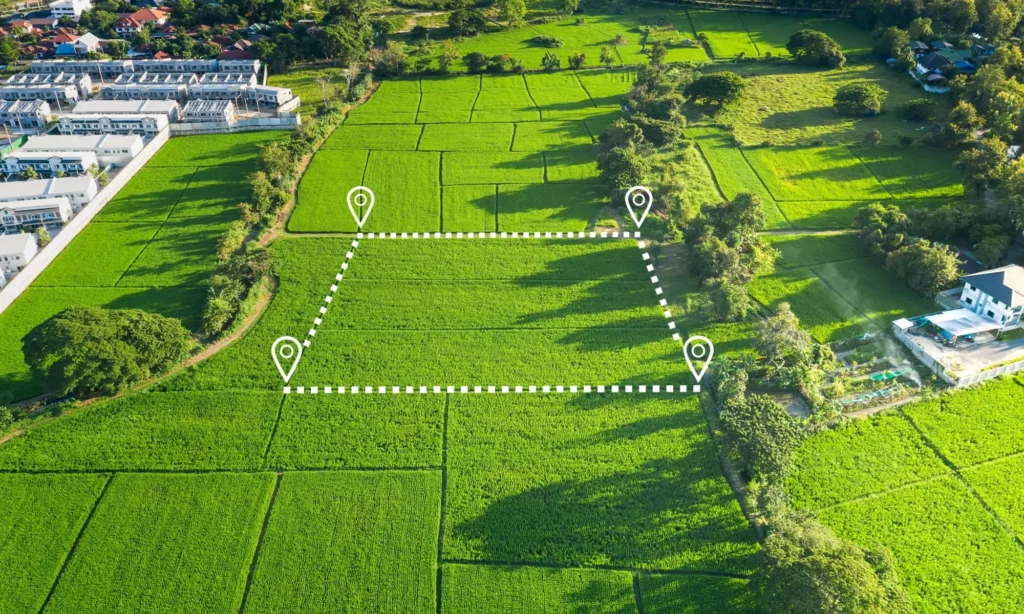Vacant land can be a lucrative investment, whether for residential, commercial, or agricultural purposes. However, listing vacant land parcels in Multiple Listing Service (MLS) systems presents unique challenges and opportunities. For both real estate professionals and buyers, understanding how to effectively list and search for vacant land is crucial to ensuring the transaction is smooth, efficient, and beneficial to all parties involved.
In this article, we will explore the nuances of listing vacant land parcels in MLS systems, why they differ from residential properties, how to optimize MLS listings for vacant land, and tips for both sellers and buyers in this particular real estate sector.
Why Listing Vacant Land is Different from Residential Properties
When it comes to MLS listings, residential homes are often the main focus. However, vacant land requires different considerations and can sometimes be more complex to market. Some key differences between residential property listings and vacant land listings include:
- No Physical Structure: One of the most obvious differences is that vacant land does not have a physical structure, such as a house or building. Buyers are typically purchasing raw land for future development, agricultural use, or recreational purposes, which means MLS listings for vacant land must emphasize different selling points.
- Zoning and Land Use: While residential listings focus on details like the number of bedrooms, bathrooms, square footage, and features, vacant land listings often need to include specific information on zoning, land use restrictions, and allowable building codes. Buyers of vacant land need this information to understand what they can or cannot do with the property.
- Land Access and Utilities: For vacant land, the availability of access (such as roads or easements) and utilities (water, electricity, sewage) is crucial. This is not typically an issue with residential listings, but for land sales, these details are important to buyers who will want to know if the land is viable for development.
- Investment Potential: Vacant land is often purchased for investment purposes. Buyers may not be immediately concerned with the land’s condition but may look more closely at its long-term value potential based on future development trends, proximity to growing urban areas, or natural resources. The MLS listing must highlight these potential investment benefits.
Key Information to Include When Listing Vacant Land in MLS

To effectively list vacant land on MLS systems, real estate agents should include the following critical details to ensure that potential buyers have all the information they need to make an informed decision.
- Property Size and Dimensions
- Acreage: The size of the lot is the most important aspect of any land listing. Specify whether the land is measured in acres, square feet, or hectares, and provide accurate details on the total size.
- Shape and Topography: Whether the land is flat, sloped, or has other notable physical features (like a hill or body of water), make sure to highlight the topography in the MLS listing. Also, buyers may want to know if the land is easily accessible by car or requires significant development.
- Location
- Proximity to Major Roads and Infrastructure: Land that is accessible by a paved road or is near important infrastructure (e.g., highways, power lines, water sources) is much more appealing than remote parcels. Be sure to specify these access points in the listing.
- Nearby Amenities: Buyers may be interested in the proximity of the land to schools, shopping centers, hospitals, or other essential services. Highlighting nearby amenities can make the property more attractive to potential buyers.
- Zoning and Land Use Restrictions
- Zoning information is essential for buyers because it dictates how they can use the property. Whether the land is zoned for residential, commercial, agricultural, or recreational use can significantly affect its value. Ensure that the listing clearly states the zoning classification and any specific land-use restrictions, such as easements, flood zone designations, or environmental protection areas.
- Utilities and Water Access
- Utilities: Most buyers of vacant land want to know whether the property has easy access to essential utilities, including electricity, water, gas, and sewer systems. If the land does not have these utilities readily available, this should be clearly stated in the MLS listing, as it will affect the property’s development potential.
- Water Access: In some cases, the land may have a well, creek, or lake. Water access is especially important for agricultural land or land that will be used for recreational purposes. Buyers will want to know whether the land can support these needs.
- Property Features and Amenities
- Features such as trees, ponds, streams, or views can be attractive selling points. If the land is adjacent to protected wildlife areas, parks, or other natural assets, highlighting this in the listing can appeal to potential buyers.
- Access Points: Ensure that the listing mentions how to access the land, whether it is through a public road, private road, or easement.
- Soil Quality and Topography
- For agricultural land, soil quality is a crucial factor. If the land has been tested and is suitable for farming, include this information in the MLS listing. Additionally, soil type and the potential for water drainage may be factors that can influence buyers’ interest in the land.
How to Optimize Vacant Land Listings in MLS
To ensure vacant land listings are as effective as possible in the MLS system, consider the following optimization tips:
- High-Quality Images and Aerial Photography
- High-quality photos are essential when listing vacant land, as these images give potential buyers a clearer idea of the land’s layout and appearance. If possible, use aerial or drone photography to provide a bird’s-eye view of the land. This is particularly important for larger plots where it may be difficult to capture the full extent of the property with ground-level photos.
- Detailed and Clear Descriptions
- Listings should feature detailed descriptions of the land, including specific information on zoning, access, nearby infrastructure, and utilities. Avoid vague language and ensure that descriptions are comprehensive and transparent. The more information the listing provides, the easier it will be for buyers to assess whether the land suits their needs.
- Incorporating Land-Specific Keywords
- Use relevant keywords in the listing title and description that describe the type of land. For example, use terms like “agricultural land,” “recreational property,” “development potential,” “investment opportunity,” or “raw land” to attract the right buyers. Also, make sure to include geographical keywords like the region, city, or neighborhood to improve searchability.
- Provide Survey and Title Information
- If available, include recent property surveys and title reports in the listing. This provides transparency and reassures potential buyers about the boundaries and ownership status of the land.
- Highlight Investment Potential
- Vacant land is often bought as an investment, and many buyers are seeking land for future development or long-term value. Be sure to highlight the potential for property appreciation based on local growth trends, future infrastructure projects, or zoning changes. Market the land as an opportunity for growth.
Best Practices for Buyers and Sellers of Vacant Land
For both buyers and sellers, understanding the unique dynamics of vacant land transactions is essential.
For Sellers:
- Work with real estate professionals who understand how to market vacant land, including knowing the specific questions and concerns potential buyers may have.
- Ensure that all necessary legal documents, including title reports, surveys, and zoning information, are readily available to potential buyers.
- Be transparent about any challenges the land may face, such as access issues or environmental restrictions.
For Buyers:
- Thoroughly review zoning laws and land use restrictions to ensure that the land can be used for the purpose you intend.
- Conduct a physical inspection to understand the land’s topography and accessibility.
- Consider hiring a real estate professional or consultant who specializes in vacant land to help with the purchasing process.
Conclusion
Vacant land offers unique opportunities for real estate investment and development, but it requires a different approach when it comes to listing on MLS systems. Real estate professionals should focus on providing detailed, clear, and comprehensive information about the land’s size, location, zoning, and potential uses. By optimizing MLS listings with the right information and marketing strategies, vacant land parcels can attract the right buyers who are looking for land that suits their needs, whether for residential, commercial, agricultural, or recreational purposes. Whether you’re a buyer or a seller, understanding these factors will help make the land-buying process more efficient and profitable.













